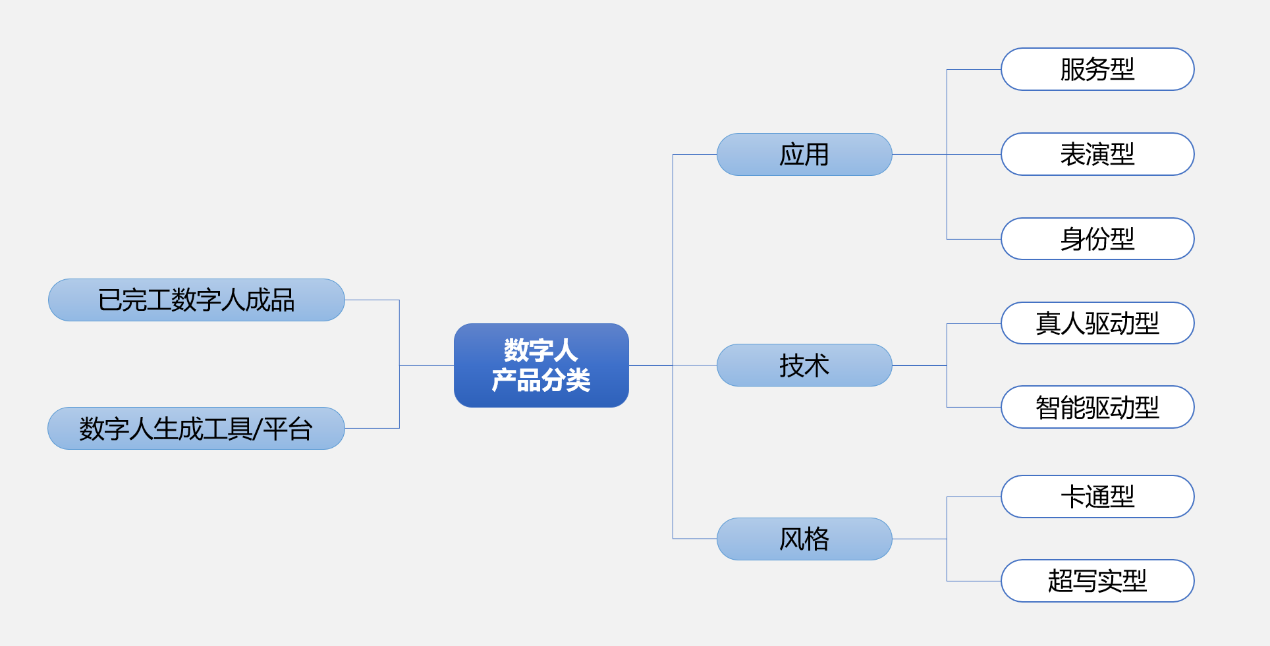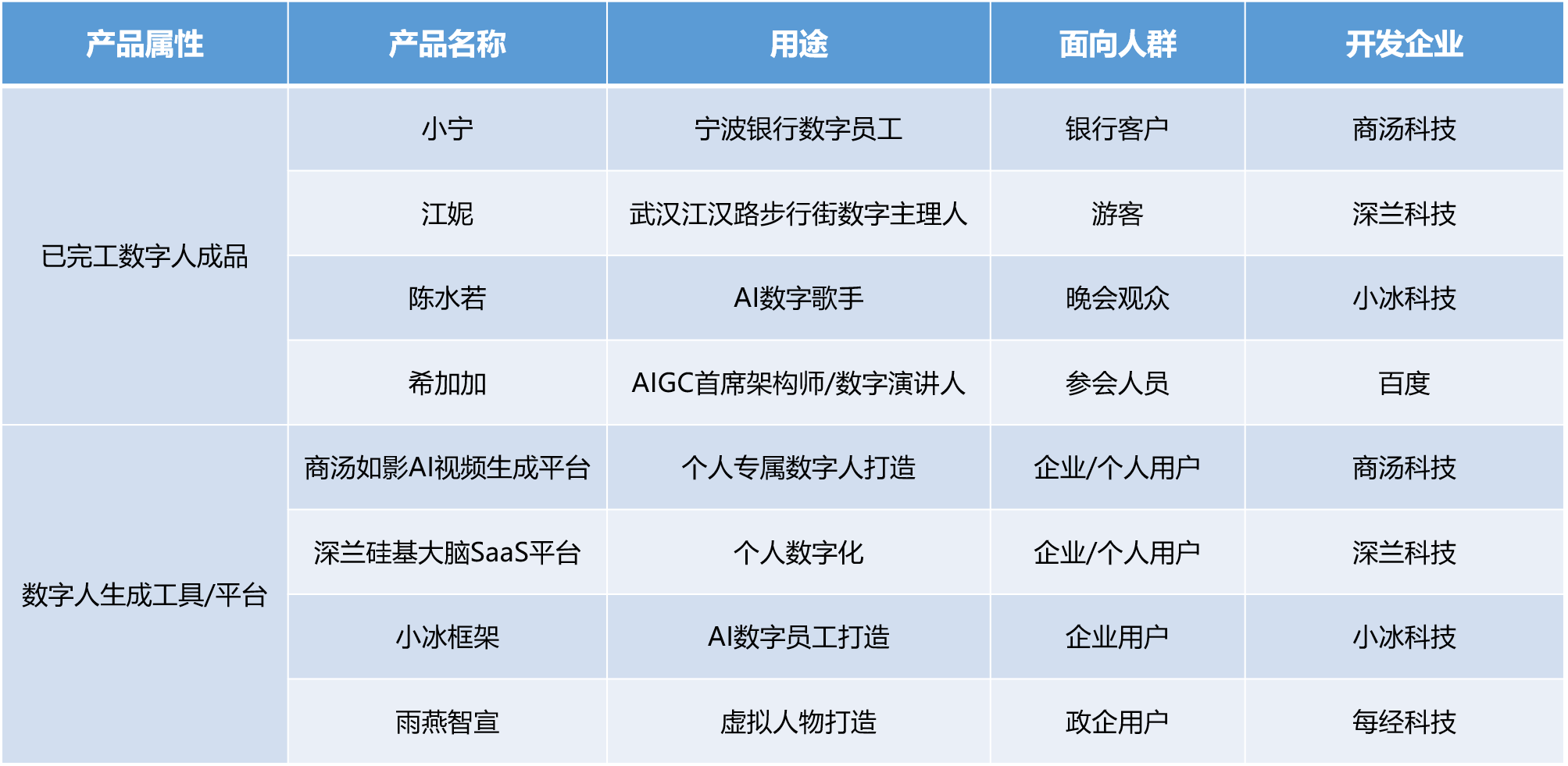Exploring the Future of the AI Industry: Can Digital Humans Powered by Large Models Achieve Greatness?
-
The 19th Asian Games held in Hangzhou has just concluded. If we were to identify the biggest highlight of this edition compared to previous ones, it would undoubtedly be the widespread application of digital human technology during the event.
At the opening ceremony, a groundbreaking 'digital torch lighting' ceremony took place for the first time. Over 100 million online users worldwide participated, collectively forming a massive 'digital torchbearer' that gracefully ran across the Qiantang River like a dragonfly skimming the water, entered the main stadium, and jointly lit the cauldron with the on-site torchbearer. This spectacle sparked widespread admiration and curiosity among netizens.
As a perfect fusion of artificial intelligence, naked-eye 3D, and augmented reality technologies, this 'digital torch lighting' not only set a precedent for the digitization of torch-lighting ceremonies in major sporting events but also made digital human technology a hot topic of global discussion across industries.
'Digital humans' are not new—cost reduction and efficiency improvement are their longstanding roles
Although digital humans have become increasingly visible in daily life in recent years, they are not a recent innovation. In fact, the world's first digital human appeared nearly 60 years ago, and they have been serving us in various capacities ever since.
As early as the 1960s, Boeing began using a digital human called 'Boeing Man' in aircraft design for ergonomic research. 'Boeing Man' not only had a human-like appearance and common behaviors but could also simulate human actions in designed scenarios and even interact with the external environment to generate data. Based on this data, designers could optimize the ergonomics of aircraft cockpits, making it easier for pilots to operate.
Additionally, digital humans have long been applied in the automotive industry. Many automakers have introduced digital human technology for crash safety testing. For example, Toyota developed a human modeling software called 'THUMS,' which creates 'digital human' drivers or passengers with highly realistic appearances, behaviors, and reactions, varying in gender, age, and body type. Using this for crash tests not only collects more comprehensive data but also maximizes testing efficiency and accuracy while minimizing costs.
Thus, for industries, digital humans themselves are not novel. What is truly new is their intelligence, enabled by mature AI technologies. Today's digital humans have evolved from merely mimicking human appearances and actions to simulating human thought processes, generating content, and enabling interactive outputs.
In recent years, with the rapid advancement and widespread adoption of generative AI technology, we have entered an era where we coexist with digital humans. From a technical perspective, today's digital humans are significantly different from early versions like 'Boeing Man.'
From an application standpoint, the digital humans developed by Boeing and Toyota can only be considered as simulated human bodies for data collection—at best, a simple digital twin of a human. Calling them 'digital humans' seems a bit of a stretch.
According to the definition provided in the 2020 Virtual Digital Human White Paper released by the China Artificial Intelligence Industry Alliance, a virtual digital human must meet three criteria: 1) possessing a 2D or 3D human appearance, 2) exhibiting human behaviors such as speech, expressions, and movements, and 3) having human-like thinking, including recognition and interaction capabilities.
By this standard, digital humans like 'Boeing Man' or those created using Toyota's 'THUMS' software cannot be considered true digital humans, as they lack human appearance, behavior, and the ability to recognize external environments or interact with people. In contrast, today's digital humans can exhibit lifelike human appearances and artificial intelligence.
For example, AI-generated voice technology and realistic facial expression and movement generation enable digital humans to communicate, deliver speeches, and broadcast with greater expressiveness and emotional impact. Additionally, with the support of large language models, digital humans can now respond appropriately to user comments. The emergence of 'digital patients' and 'digital health advisors' also allows digital humans to provide simulated medical scenarios for users.
Since 2022, many domestic companies have become pioneers in applying intelligent customer service technology, 'hiring' digital employees. When you communicate with a company's customer service online or log into an online business portal to handle transactions, there's a good chance you're interacting with a digital human.
During the '2023 World Artificial Intelligence Conference' held in July, the Shanghai Municipal Commission of Economy and Informatization, the Shanghai Industrial Technology Innovation Promotion Association, and DeepBlue Academy jointly released China's first 2023 Digital Intelligent Industry Series Report: Personal Digitalization white paper. This report divides the development of digital humans into three stages: content digitization, human digitization, and life digitization. It also explores the future of the digital human industry from three dimensions: digital interaction, digital twins, and digital storage.
Thus, it is clear that today's digital human industry has firmly taken center stage in the digital economy.
In the rapidly evolving landscape of AI technology, digital humans have become a prominent product, accelerating commercialization as many tech companies enter the field. Data from Qichacha shows that there are currently tens of thousands of enterprises in China related to the digital human industry. These products can be classified into seven major categories based on application, technology, and presentation methods. Alternatively, they can be divided into three main types by attribute.

From an application perspective, digital humans are primarily categorized into service-oriented, performance-oriented, and identity-oriented types.
Service-oriented digital humans emphasize functional attributes, providing various services to the public, such as virtual customer service, hosts, and tour guides. They also include virtual assistants and advisors with companionship and care value, mainly targeting B2B clients to reduce costs, improve efficiency, and enhance marketing. For example, in 2022, SenseTime created the digital employee "Xiao Ning" for Ningbo Bank, which belongs to this category. "Xiao Ning" is built on SenseTime's original "Virtual IP Solution" and various advanced AI technologies, capable of autonomous live streaming, operations, and interactions, achieving round-the-clock "user engagement." Similarly, DeepBlue Technology's digital manager "Jiang Ni" for Wuhan Jianghan Road Pedestrian Street's smart upgrade project also falls into this category.
Performance-oriented digital humans highlight idol attributes and are currently used in entertainment, social, and office scenarios, such as virtual idols and celebrity avatars. Compared to service-oriented digital humans, they have greater appeal and commercial potential. For instance, during this year's Guangdong TV Spring Festival Gala, Chen Shuiruo, who performed the song "God of Wealth" with Kenny Bee and Gigi Yim, is an AI-generated digital singer specializing in Chinese-style music, created using the "Xiaoice Framework."
Identity-oriented digital humans emphasize identity attributes, representing the virtual IDs or digital avatars of real individuals in virtual spaces or the metaverse. Unlike the other two types, identity-oriented digital humans primarily target individual users, focusing on the highly imaginative personal digitalization industry. Currently, they are used in social and office scenarios, with vast potential for future applications and development.
At the recently held '2023 Power of Innovation: Wujiang First High-Tech Industry Capital Summit,' DeepBlue Technology announced the nationwide recruitment of partners for its 'Silicon-Based Brain SaaS Platform.' This platform, developed based on a silicon-based knowledge model, serves as a digital human generation product for personal digitalization. It records individual daily data and is used for high-dimensional customized training in areas such as domain knowledge and personalized personas for digital humans. The ChatGPT-level AI digital humans quickly built by users through this platform fall under the category of identity-based digital humans.
From a technical perspective, digital humans can be divided into two major categories: human-driven and AI-driven.
Human-driven digital humans are constructed using 'CG modeling + real human motion capture.' After completing modeling and key point binding, these digital humans can capture the movements, expressions, and language of real humans through devices and use these as drivers to perform corresponding actions and interactions. This approach can be seen as an extension of traditional CG technology in film production, emphasizing 'human-machine coupling.' The technology is relatively mature, especially with recent advancements in algorithms and the use of high-definition motion capture devices, which have overcome technical challenges in stably and smoothly capturing and displaying subtle expressions and movements of real humans. This makes it the most commonly used type of digital human today. For example, digital humans created using Tencent's Zhiying video generation platform belong to this category.
AI-driven digital humans, on the other hand, rely on multimodal large model technology to drive parts of the human body such as eyes, eyebrows, and mouth, enabling the digital human to exhibit movements, expressions, and even memory and thoughts comparable to real humans. This forms a unique 'persona' and skill set, allowing the digital human to autonomously produce content and interact with the outside world. Such digital humans primarily operate based on knowledge graphs and currently mostly appear as 'tool-like' entities, such as virtual customer service agents, virtual assistants, and virtual tour guides.
Technically speaking, fully AI-driven digital humans pose high technical requirements in terms of persona, thoughts, memory, and active interaction and output. Therefore, platforms developing this type of digital human are mostly still in the technical攻坚 stage, with only a few companies achieving breakthroughs. Those digital humans with partial cognitive abilities and capable of intelligent interaction have only recently begun commercial use. The digital humans created through DeepBlue's Silicon-Based Brain SaaS Platform, if classified technically, can also be categorized under this type.
From a presentation perspective, virtual digital humans are mainly divided into cartoon-style and hyper-realistic types.
Cartoon-style digital humans emphasize virtual attributes. Although they exhibit human behavioral patterns such as language, movements, and expressions, everything about them is fictional and does not exist in the real world. This type of digital human has existed since the advent of animated films and TV shows. Its advantages mainly lie in ease of production, high output, and low cost. Therefore, this type of digital human is primarily found in二次元 (2D), games, and卡通动画 (cartoon animations).
Hyper-realistic digital humans, on the other hand, emphasize digital asset attributes. As the current mainstream development direction for digital humans and an important tool for future personal connections to元宇宙 (metaverse) scenarios, they从一开始 (from the outset) bypass '2D' and 'cartoon.' Through精细设计 (meticulous design) and technical synthesis, they come with high-definition character modeling,专属服饰 (exclusive clothing), and scenes, aiming to尽可能贴合 (closely resemble) the appearance of real humans in the real world.
At the "2023 Global AI Developer Pioneer Conference" held in February, Baidu's AI digital human Xijiajia appeared as Chief AIGC Architect; personal digital clones created through SenseTime's "Shadow" platform; and virtual anchors generated via NBD's "Swift Intelligence Broadcasting" platform all represent hyper-realistic digital humans.
Categorized by product type, these fall into two groups: ready-made products like AI singer Chen Shuiruo, Baidu's Xijiajia, and Ningbo Bank's digital employee "Xiaoning"; and tool platforms including SenseTime Shadow, DeepBlue Silicon Brain SaaS, and NBD Swift Intelligence Broadcasting.

"Digital Humans" Transform as "Intelligent Digital Beings" Emerge
China's digital human industry is accelerating, with tech companies expanding deployments across sectors. Forward Economics predicts the market will reach ¥30 billion by 2027, growing at 30% CAGR. Breakthroughs in ASR, NLP, TTS, STA, and affective computing enable digital humans to serve as next-gen AI interfaces and metaverse mediators.
Identity-type digital humans (virtual IPs/avatars) show particular promise in e-commerce, livestreaming, and marketing due to their creative potential. As digital humans evolve with enhanced human-like characteristics and large language model integration, they're progressing toward conscious "intelligent digital beings" (数智人). These entities will enable industry-specific applications while providing superior companionship experiences.
In summary, although the digital human industry is still in its early stages of development, future technological breakthroughs, lower application barriers, and an expanding market will undoubtedly bring digital humans into our lives and households.
As the saying goes: Anything is possible, and everything is worth anticipating.
